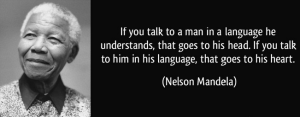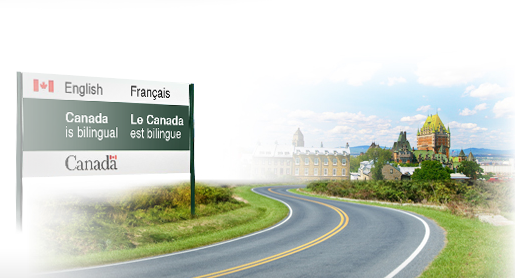Human nature is a funny thing. We are programmed to think that what is far and out of reach is more attractive and valuable than what’s right here within reach. With all the hype lately about selling to China, many brands invest in processes and infrastructures to get their products overseas, without having first maximized local sales. Given the sheer size of the Chinese market, we feel that the investment is bound to be worth it. But have you truly maximized your growth opportunities in North America? What if your brand could become a family tradition in the various linguistic communities that constitute more than 20% of the US and Canadian populations?1 Once your brand is known and loved here in North America, making your way to overseas markets is just a matter of adapting your marketing and putting in place new distribution channels.
Expanding to Mexico, France, China and India should start here at home, where new immigrants can be your best brand ambassadors, thanks to social media.
Taking advantage of the North American Free Trade Agreement, close proximity and convenient distribution channels, the US, Canada and Mexico represent a widely accessible market of half a billion people. Taking advantage of our own diverse communities to build brand awareness locally is the most efficient way to pave the way for global expansion into larger markets abroad. But to do so effectively, language adaptation and multicultural marketing need to be part of your strategy for local sales. Small and medium size companies often have a hard time understanding the value of multilingual marketing, but global brands like Coca Cola truly get it.
A linguistically and culturally adapted marketing approach demonstrates cultural understanding and respect, as well as a commitment to customer service. It also naturally grows the popularity of your brand globally as people share comments and pictures with their cultural communities, on social media.
With Social Media, Local is Global
Once you adopt a multilingual approach online, new immigrants can be your best brand ambassadors. Engaging with them on social media enhances customer service and allows you to provide valuable information about your products or services. Social platforms are an excellent way to engage and better serve customer by responding to queries, addressing concerns, and interacting personally and with transparency on a human level. Decision makers need to stop thinking of Social Media as an advertising tool that should be measured in dollar figures. The ROI of your social strategy is measured in the way your brand is perceived and talked about. Increasingly, customers expect to be seduced and engaged. In a complex marketplace, marketers need to take emotions into account. And to reach people emotionally, you need to speak to them in their own language.
Doing Business in Canada
If your brand sells across Canada, you already know that your labels and website need to be bilingual (English/French). But since Canadian and Québec language laws stop at labels and websites, many companies have omitted to establish a bilingual presence on social media. Now that you know how important the Québec market is to your brand, you should really consider engaging with your Québec customers, in French. Your investment will go a long way in building commitment to your brand.
Boosting Local Sales in the US
Investing in multilingual marketing in the US should start with localizing your website and marketing strategy into Spanish. This alone will allow you to reach 38 million2 local customers. If you are operating in the luxury industry, you might want to also include Chinese in your marketing plan….given the buying power of new immigrants from China, this target group might make more sense for you than any other demographics.
We speak English at work and on the streets, but we think, like and shop in our own language.
Most of us are searching and interacting online in our own language. We read newspapers and magazines in our own language, and most likely listen to the radio or watch TV programs in our own language too. On the public front, at work, on the streets, yes – English is a great unifier. But if you want your brand to be top of mind with your customers, you need to get into their private life, their home, their car. If you’re ready to expand to new markets, give some thought to local sales that can reach 70 million people in a range of languages. Once you have localized your site and social media strategy to reach and engage with local Spanish speakers, Mexico and several Latin American countries are just a few steps away.
The ROI for localizing your website and social media is already considerable when focussing on local, Canadian and American markets, but your multilingual efforts will soon be compensated by the ripples your brand will make internationally. It makes sense to start with the low hanging fruits. Your local market includes millions of people that can be reached with minimum investment. All you need is good advice, a well thought out strategy and a multilingual team.





![Connect with South Asian Canadians With These English [And Hindi!] Diwali Wishes](https://www.latmultilingual.com/wp-content/uploads/2023/11/Diwali-500x383.png)









